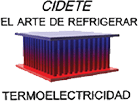University College Cork and TRANSLATE researcher Dr. Ievgen Nedrygailov presented at the 2022 European Materials Research Society (E-MRS) Fall Meeting on September 20th 2022, with his presentation entitled ‘Ionic thermoelectric effect in nanofluidic membranes for efficient conversion of waste heat into electrical energy’.
The conference ran from September 19th – 22nd at the University of Technology in Warsaw.
Abstract:
Thermoelectric energy harvesting is a promising, environmentally friendly way to generate electricity that could lessen our dependence on fossil fuels and reduce the harmful emissions associated with their combustion. At present, the use of thermoelectricity is severely limited due to the low efficiency of converting low-grade waste heat into electricity, which is about 63% of the total unused thermal energy released into the environment [1]. Thus, the development of new methods for efficient thermoelectric power generation from waste heat is of great importance.
In this presentation, we show that the efficient recovery of low-grade heat can be achieved in well-aligned nanochannels with electrically charged walls, based on the ionic thermoelectric effect. The nanochannels, with diameters of approximately 10 nm and lengths ranging from a few micrometers to several millimeters, are created by the two-stage anodisation of aluminium, the chemical treatment of natural wood and other methods. The charge density on the walls of the nanochannels can be increased through surface functionalisation with organic ligands, leading to the formation of overlapping electrical double layers (EDLs).
These EDLs can act as ion filters in the presence of a temperature gradient across the nanochannels, allowing ions with a certain charge to move freely through the pores, resulting in the generation of thermopower. Such ionic thermoelectric converters can transform low-grade heat into electricity with thermopowers of up to 3 mV/K, using aqueous electrolytes such as NaCl and KCl, which is higher than that of conventional solid-state thermoelectric converters.
By varying the geometric parameters of the nanochannels, e.g. the type and concentration of the electrolyte, surface charge density, higher thermopowers should be achievable in these systems. Ionic thermoelectric power converters therefore have the potential of becoming game changers in the field of thermoelectric power conversion.
You can find out more details about the event here.







